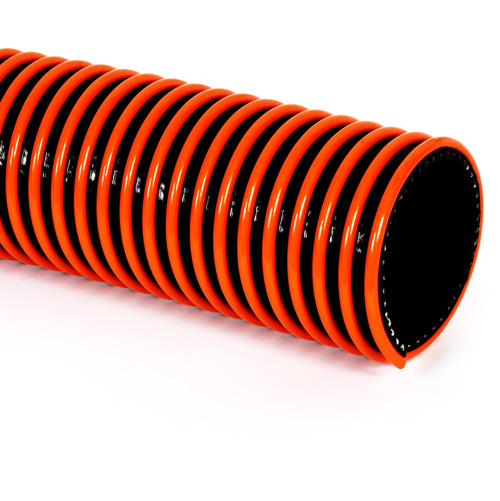Air Hose Rubber vs PVC
Air Hose Rubber vs. PVC
When it comes to choosing the right air hose for your pneumatic tools or air compressors, two of the most common materials you'll encounter are rubber and PVC. Both materials have their pros and cons, which can significantly affect the performance, durability, and efficiency of your air system. Understanding the differences between rubber and PVC air hoses can help you make an informed decision for your specific needs.
Rubber Air Hoses
Rubber air hoses have long been the go-to choice for many professionals in various fields. One of the biggest advantages of rubber hoses is their durability. They are typically more resistant to abrasions, weather conditions, and extreme temperatures than their PVC counterparts. Whether you're working outdoors in the winter or in hot, humid conditions, rubber hoses can maintain their flexibility and integrity, ensuring a reliable airflow.
Another key benefit of rubber air hoses is their resistance to kinks and bends. This feature is particularly important in high-stress environments where the hose may be dragged over rough surfaces or manipulated frequently. The ability to withstand these stresses without kinking helps maintain a consistent air pressure and extends the hose's lifespan.
However, rubber hoses can be heavier and more expensive than PVC options. They may not be the best choice for casual users or those who require a hose for light-duty tasks. Additionally, the cost may be a deterrent for some; yet, this investment can pay off in the long run through enhanced durability and fewer replacements.
PVC Air Hoses
air hose rubber vs pvc

On the other hand, PVC (polyvinyl chloride) air hoses have gained popularity, especially in industrial applications and for lighter-duty tasks. One of the primary advantages of PVC hoses is their lightweight nature. This makes them easier to handle, transport, and store, making them an appealing choice for DIY enthusiasts and casual users.
PVC hoses also tend to be more affordable than rubber hoses, offering a practical option for those on a budget. They provide decent flexibility and are often available in various colors, which can be useful for identifying different applications or pressures.
However, PVC air hoses are generally less durable than rubber hoses. They are more susceptible to kinking, especially in cold weather, which can lead to reduced airflow and potential damage to pneumatic tools. Additionally, they may not withstand extreme temperature variations and could become brittle over time, leading to cracks and leaks.
Making the Right Choice
When deciding between rubber and PVC air hoses, consider the specific tasks you plan to undertake. If you need a hose for heavy-duty, professional applications that require durability and versatility, a rubber air hose is likely the best option. Conversely, if you’re looking for a lightweight, budget-friendly solution for occasional use, a PVC hose may meet your needs effectively.
Ultimately, both rubber and PVC hoses have their place in the world of air tools. The choice depends on your unique requirements, including the environment you’ll be working in, the intensity of use, and budget constraints. By carefully weighing the pros and cons of each material, you can select an air hose that will serve you well for years to come.
-
Top Quality Oxy Acetylene Hoses for Sale Fit for Welding DemandsNewsJul.28,2025
-
The Future of Pneumatic Air Tubes in IndustryNewsJul.28,2025
-
Superior and Reliable LPG Hose Pipe Solutions for Every NeedNewsJul.28,2025
-
Exceptionally Durable and Versatile Premium Braided PVC TubingNewsJul.28,2025
-
Best Adapters for Connecting Garden Hose to PVC Pipe ConnectionsNewsJul.28,2025
-
The Essential Role of LPG Hoses in Safe and Efficient Gas DistributionNewsJul.16,2025














